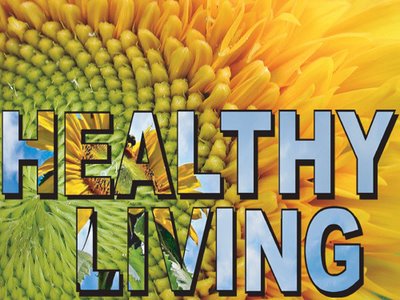 Many natural remedies have not been approved by the FDA yet have had success with many people. We at Healthy Living are just going to give you the treatment and claims of some of these Natural cures. In the end you have to decide whether it is right for you. Today's herb is
Many natural remedies have not been approved by the FDA yet have had success with many people. We at Healthy Living are just going to give you the treatment and claims of some of these Natural cures. In the end you have to decide whether it is right for you. Today's herb isMullein.
Mullein(Verbascum thapsus)
is a dramatic biennial herb of the Scrophulariaceae or figwort family. Mullein has a tall, straight stem with large, oval, felt or flannel-like leaves and a long dense spike of yellow flowers near its top. During the first year it produces only a rosette of downy leaves followed from June to August of the second year by the long flowering stalk. The densely hairy, erect stem sometimes reaches a height of 7 feet. The leaves become smaller and smaller as they near the top of the plant. The outer leaves are supine and, working inwards, the leaves become more and more vertical. The stem leaves are alternate, clasping a long part of the stem. The stem ends in a dense spike composed of yellow flowers 1.5-3.5 cm wide, opening from bottom to top. Flowers are yellow in color, approximately 1 inch in diameter, and consist of five petals. The fruit is a dry capsule, containing numerous small seeds. Mullein is also known as common mullein, great mullein, mullein dock, velvet dock, Aaron's-rod. Adam's-flannel, old-man's-flannel, blanket leaf, bullock's lungwort, cow's lungwort, clown's lungwort, candlewick, feltwort, flannel-leaf, hare's-beard, velvet plant.
Active Constituents
Mullein contains mucilage, saponins, volatile oil, bitter glycosides, gum and flavonoids including hesperidin. The mucilaginous constituents are thought to be responsible for the soothing actions on mucous membranes. The saponins may be responsible for the expectorant actions of mullein. It also contains rotenone and coumarin, considered danderous by the FDA. The seeds contain a sapotoxin called rotenone which impedes cellular respiration and is used to intoxicate fish for fishing or population control.
Health Benefits
In folk medicine, mullein is valued as a demulcent, emollient, antispasmodic, astringent, diuretic, vulnerary, and expectorant. Traditionally, leaf and flower tea was used as an expectorant, an antispasmodic, a diuretic, for chest colds, asthma, bronchitis, coughs, and kidney infections. The leaves were made into a poultice for ulcers, tumors, and hemorrhoids, the flowers were soaked in olive or mineral oil and used as earache drops.
Mullein soothes irritating inflammations of the trachea and bronchial tubes. Mullein is also effective for hard, dry coughs and bronchial spasm. Flowers and leaves from mullein are used for their strong mucilaginous (sticky and viscous) content against all forms of throat and lung irritation. The seeds together with the leaves boiled in wine can be applied topically to draw out splinters and thorns embedded in the flesh. The leaves have exhibited strong anti-inflammatory properties. The leaves are used for upper respiratory conditions including asthma, emphysema, coughs, bronchitis, etc. Mullein tea is a beneficial remedy for bronchitis, sore throat, tonsillitis, dry coughs, and hoarseness. Infuse the leaves in boiling water and inhale the steam for colds, hayfever and sinus. The flowers have bactericidal and sedative properties and are generally considered more medicinally potent than the leaves. An oil extract of the flowers relieves earache, and the blossom tea can ease headache pain and promote sleep.
source: vitamin and health supplement guide
General Safety Advisory
~The information in this document does not replace medical advice.
~Before taking an herb or a botanical, consult a doctor or other health care provider
-especially if you have a disease or medical condition,take any medications, are pregnant or nursing, or are planning to have an operation.
~Before treating a child with an herb or a botanical, consult with a doctor or other health care provider.
~Like drugs, herbal or botanical preparations have chemical and biological activity. They may have side effects. They may interact with certain medications. These interactions can cause problems and can even be dangerous.
~If you have any unexpected reactions to an herbal or a botanical preparation, inform your doctor or other health care provider
